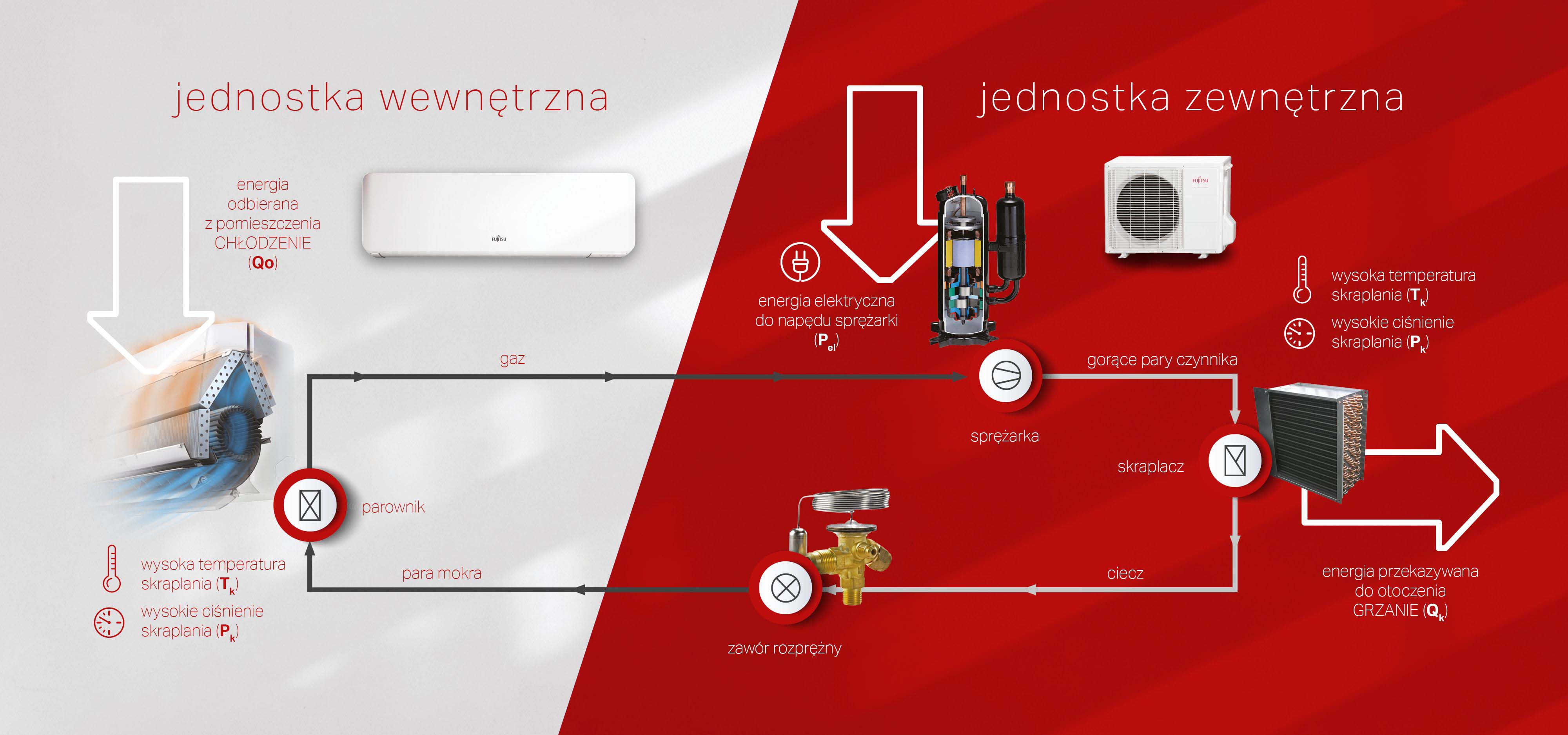It is common knowledge that air conditioners generate cool air, and this very process is explained below.
All air conditioners are fitted with a built-in refrigeration system. This system is responsible for collecting energy from rooms and discharging it outside. This happens in the course of two processes: evaporation (the process of taking energy from the air in the room) and condensation (the process of discharging energy to the air outside). That is why this type of air conditioning is referred to as direct evaporation. To ensure that the cooling process always functions at low temperatures and the condensation process at high temperatures, variable pressure is generated in the refrigeration system: low pressure in the evaporator (at low pressure liquids evaporate at lower temperatures) and high pressure in the condenser (at high pressure gases liquefy at higher temperatures). This difference in pressure is generated by a compressor located between the evaporator and condenser. The last element of the refrigeration system is the expansion valve which maintains the generated pressure difference.





 Poland
Poland Sweden
Sweden Finland
Finland German
German Estonia
Estonia